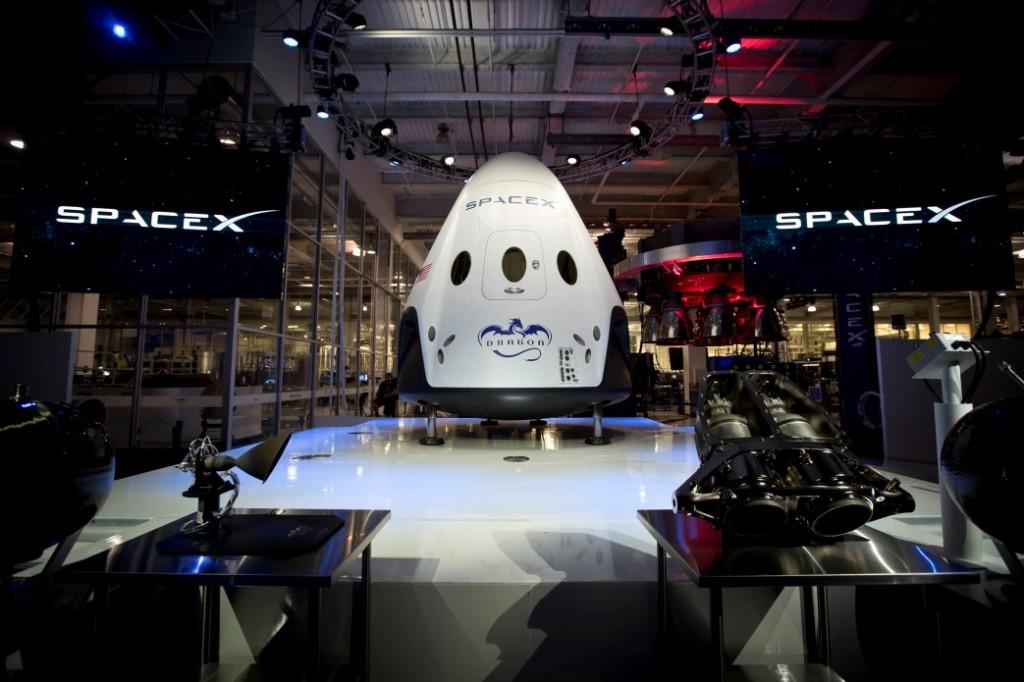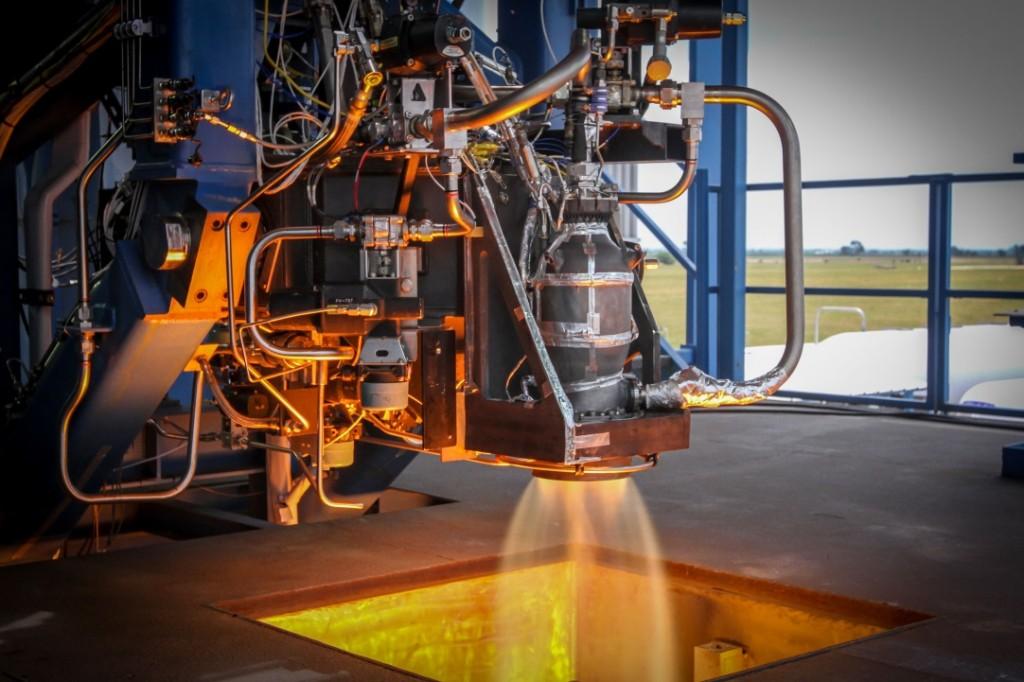 We’ve been following SpaceX and the Dragon supply ship missions, spellbound, as the craft was spacebound to the International Space Station and back throughout the past months, catching the attention of pretty much everyone we know, and especially the ‘crew’ at 3DPrint.com.
We’ve been following SpaceX and the Dragon supply ship missions, spellbound, as the craft was spacebound to the International Space Station and back throughout the past months, catching the attention of pretty much everyone we know, and especially the ‘crew’ at 3DPrint.com.
Even better was when the box of items successfully 3D printed was delivered back to very curious earthlings at NASA 29 days later. Interest continues to grow even as some missions of late with the Falcon 9 have resulted in fireballs–instead of success. But that’s exactly what test missions are for. Today, the plot—and the real-life mission–for heading into space continues to thicken.
Interest and suspense continue to build as SpaceX works to send something besides supplies into space. Now they are getting ready to send people. While it’s quite the endeavor, both technically and economically, to send supplies into space—sending live human cargo is another story altogether. What’s most important when being able to send people somewhere like the ISS? That they get there alive, and that there is a viable escape route when something goes wrong.
Today’s ‘Pad Abort Test,’ featuring a dramatic picture with the Dragon spaceship and its eight Super Draco engines shooting it upward after a six-second engine blast from Cape Canaveral, was all about coming straight back. These Super Draco engines are important in that they are new, unique technology and also just happen to be 3D printed components. Produced through a method of printing known as laser sintering, these thrusters are made from Inconel superalloy. Without the technology of 3D printing they would not have been able to produce parts that offer extreme durability, fracture resistance, and ductility.
 In its first test for abort procedures, the Dragon carried a dummy named Buster, along with added aluminum blocks meant to provide for the weight which would actually be provided by the other six passengers in a real mission. Testing procedures for rocketing back to earth, the powerful Super Dracos delivered a thrust of 120,000 pounds. They are built into the side of the Dragon, and in
In its first test for abort procedures, the Dragon carried a dummy named Buster, along with added aluminum blocks meant to provide for the weight which would actually be provided by the other six passengers in a real mission. Testing procedures for rocketing back to earth, the powerful Super Dracos delivered a thrust of 120,000 pounds. They are built into the side of the Dragon, and in  later missions will be used to allow the craft to land back on terra firma instead of the ocean. It would seem that’s a refinement a long time in coming and much needed, and SpaceX VP of Mission Assurance Hans Koenigsmann shares the enthusiasm for landing without water splashing.
later missions will be used to allow the craft to land back on terra firma instead of the ocean. It would seem that’s a refinement a long time in coming and much needed, and SpaceX VP of Mission Assurance Hans Koenigsmann shares the enthusiasm for landing without water splashing.
“Imagine you land,” Koenigsmann said, “you check out the vehicle, you bring it up to the launch pad, and you it launch again. That’s the vision.”
Today, however, the Super Draco engines did their job in allowing for the power necessary to send the Dragon upwards of 5,000 feet. After that:
- The Dragon separated from the trunk.
- It then deployed two drogue parachutes.
- Three red and white main parachutes, deployed by air pressure, let the capsule descend.
- It landed gently in the ocean, a mile out.
Operating on the cutting edge not only of innovation, but also history, the team at SpaceX is testing new technology which provides a pusher escape system allowing astronauts to come back to earth rather than remaining inside a failing rocket. We’ve all heard about the famous eject button in aircraft as well as that type of emergency process for space missions (and especially in sci-fi movies, where let’s be honest, most of us get our armchair expertise), but this takes it in a different direction—literally. Rather than pulling space capsules to safety, the escape system pushes it.
“The more integrated approach is the more sophisticated, modern approach, and in my opinion, it’s also the safer approach to launch escape,” said SpaceX VP of Mission Assurance Hans Koenigsmann. “On previous rockets, there are times when you can’t get out, and on this particular vehicle, you can always get out. Whatever happens to Falcon 9, you will be able to pull out the astronauts and land them safely on this crew Dragon.”
We’ve learned from history, obviously. With so many successes and some tragedies as well, coming up with a way to ensure that those traveling in the spaceship can either reach their destination safely, or come back to earth after aborting successfully is obviously something those behind the missions are always striving for.
Testing on this mission allowed for checking:
- Temperatures
- Vibration
- Sound
- Acceleration
Buster apparently reported that his trip went swimmingly, and he will live to test another mission. The crew escape system will be tested again this summer as we all give our rapt attention once again, enjoying the new energy—again, literally—that SpaceX has attached to NASA. The next Dragon will be tested with a Falcon 9 at 40,000 feet, offering a much more intense flight as it passes through Max Q.
Have you been following the latest missions to the ISS, as well as testing going on with the SpaceX Falcon 9 and more? Share your thoughts with us in the SpaceX Test Abort Mission forum over at 3DPrint.com.
Subscribe to Our Email Newsletter
Stay up-to-date on all the latest news from the 3D printing industry and receive information and offers from third party vendors.
You May Also Like
3D Printing News Briefs, April 13, 2024: Robotics, Orthotics, & Hypersonics
In 3D Printing News Briefs today, we’re focusing first on robotics, as Carnegie Mellon University’s new Robotics Innovation Center will house several community outreach programs, and Ugogo3D is now working...
Rail Giant Alstom Saves $15M with 3D Printing Automation Software 3D Spark
3D Spark has entered into a three-year deal with the rail giant Alstom. Alstom, a transport behemoth with annual revenues of $16 billion, specializes in the manufacture of trains, trams,...
Meltio Expands Global Reach with New Partnerships in the Americas and Europe
Spanish 3D printing manufacturer Meltio has expanded its sales network across the globe. With the addition of three new partners in the United States, Brazil, Argentina, and Italy, Meltio aims...
3D Printing Webinar and Event Roundup: April 7, 2024
Webinars and events in the 3D printing industry are picking back up this week! Sea-Air-Space is coming to Maryland, and SAE International is sponsoring a 3D Systems webinar about 3D...
































